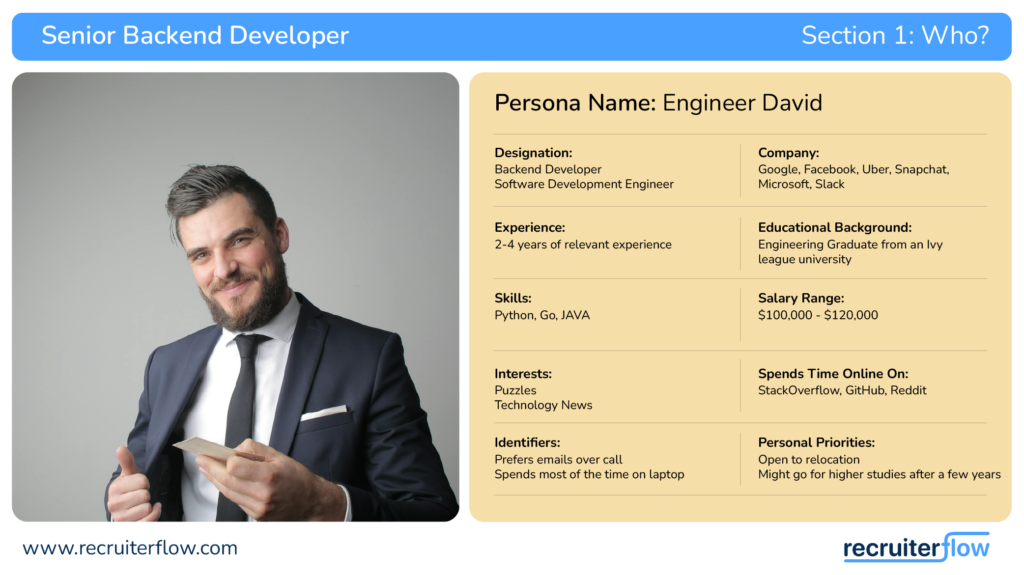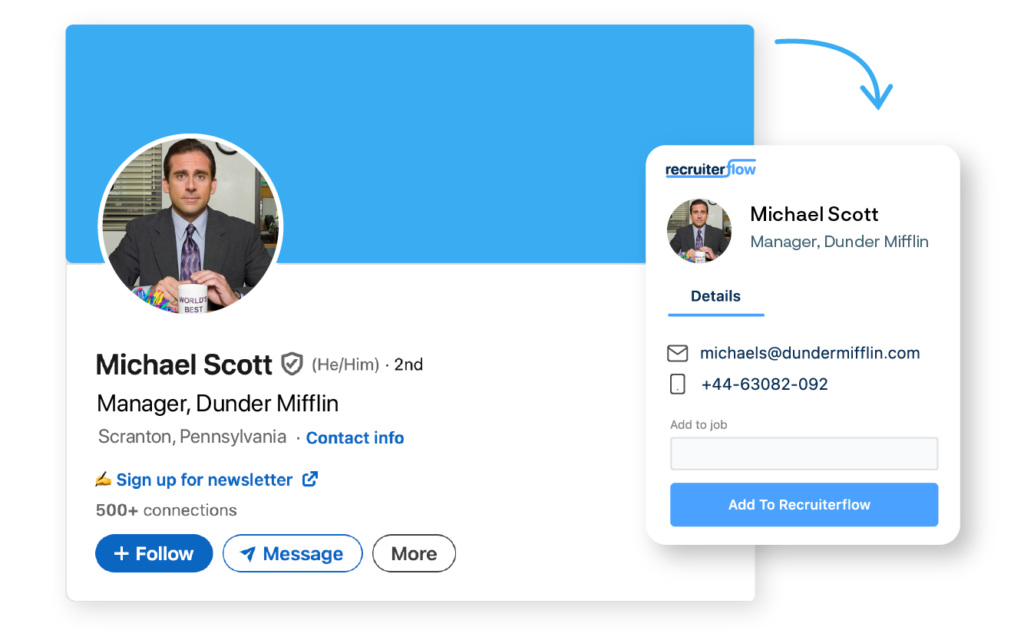
8 Talent Sourcing Strategies that Work in 2025
Having the right talent sourcing strategy in recruitment not only helps you increase the size of your talent pool but also helps you close positions faster.
In this guide, we’ll dive into what a talent sourcing strategy is, effective sourcing techniques, and tools that can help you along the way.
What is a Talent Sourcing Strategy?
The aim of a well-defined talent sourcing strategy is not only to get quality candidates but also to create candidate engagement and improve the candidate experience. Having a talent sourcing strategy in place helps companies recruit proactively and maintain a healthy pipeline of candidates.
8 Talent Sourcing Strategies That’ll Work in 2025
From getting more quality candidates to enhancing candidate engagement to creating a quality outreach strategy to having a great candidate experience, here are the best tips to create winning talent-sourcing strategies.
1. Create a Candidate Persona To Hire Better
Before you start sourcing candidates for a position, it’s always advisable to create an ideal candidate persona.

An ideal candidate persona helps you identify the right channel, message, and strategy to source more qualified candidates. Creating a candidate persona is a multi-step collaborative process, so you would need to talk to your team, hiring managers, and do some research before you fix a persona. You can also read our blog on how to create a candidate persona to hire better.
2. Source Candidates Who Are Similar To Your Candidate Persona
Once you have successfully created the candidate persona, you need to actively source candidates who match your candidate persona. These candidates can be present on a number of platforms; however, depending on your candidate persona, you can choose a platform of your choice. If I am recruiting developers, I would choose StackOverflow or GitHub as a candidate source, whereas if I am recruiting designers, I am better with Dribbble or Behance. There are multiple sourcing tools out there that you can use to enhance your sourcing efficiency:
LinkedIn X-Ray Search
LinkedIn X-Ray search tool helps you create Boolean queries to do an X-Ray search on LinkedIn. It gives you a list of LinkedIn profiles that match your search criteria.
Recruiterflow Chrome Extension
Once you have a list of LinkedIn/Xing/Angel.co/GitHub profiles, to whom you want to reach out to, just use the Recruiterflow Chrome Extension to import these profiles to Recruiterflow in one 1-click.

You can not only their personal details but professional details like Experience, Education, and Skills as well.
StackOverflow SQL query generator
When you are looking for a developer, there’s no better plan to find them than StackOverflow. However, searching through StackOverflow is not as simple as LinkedIn. In order to search through StackOverflow, you need to build an SQL query. But even if you are not a developer, you can use this StackOverflow query generator to create an SQL query by just giving some manual inputs.
You can also check how to use the SQL query generator to source candidates on Stackoverflow.
3. Find a Way To Connect With Your Leads
Finding a set of perfect candidates for a job is just the first step in creating your talent-sourcing strategy. Connecting with these leads and turning them into applicants is the major objective of any recruitment sourcing method. First things first, decide which channel to use to reach out to these users. I typically prefer LinkedIn messages to reach out to a sales guy vs. emails when it comes to reaching out to a developer. If you’re planning to send bulk messages on LinkedIn, make sure to personalize each message and avoid coming across as spammy to increase your chances of getting positive responses
Get their email if you want to reach them via email. You can use sourcing tools like Hunter.io, ContactOut, or Lusha to get their email address. In case you want to reach out to them using social media, it’s always good to connect with them using mutual contact.
You can also check out our blog on creating a strategic recruitment plan, which includes several useful templates.
4. Craft Personalized Email Sequences
One message doesn’t fit all. This is especially true for recruitment! You need to personalize your message to candidates to get more replies and enhance engagement. Talk about common hobbies, common skills, why they are suitable for the role, etc! Keep it short and sweet, and never try to oversell a position. Remember, these candidates are not actively looking to change roles, and any overselling will only hurt your employer’s brand.
Also, read our blog on recruiting skills
You should talk about your culture, team, vision, and what drives your company in the 1st email. If you don’t hear back immediately, you should always follow up with your candidates within a few days. If you don’t know how to make a catchy letter, you can use ChatGPT VPN to access to AI bot for generating letter templates.
At Recruiterflow, we have seen reply rates close to 45% for email sequences with 3 touchpoints spread across 20 days. While your first email needs to be personalized, your follow-ups can be templates and should be automated to help you save time. We have compiled some cold recruiting email templates that you can use to get started.
Also, read our blog on AI Sourcing to enhance your candidate search.
5. Always Value The Candidate’s Time
A number of companies excel at sourcing candidates and reaching out to them. However, when it comes to the call to action in the email, they lose out on a large number of qualified candidates. Your call to action should always value the candidate’s time. Whether you’re using an in-house or outsourcing recruitment agency, your call to action should always value the candidate’s time. Never ask them to:
- Apply for a job, as you are the one reaching out to them
- Give a test before explaining on a call about the role and the recruitment process
- Send their resume or cover letter in the first email, as you should have this information before you reach out to them
We studied close to 200k emails, and the only thing that works best is asking the candidate to come on a 10-15-minute call at their convenience so that you can talk more about the role and the company. When you are asking a candidate to spend the next 2-3 years of their professional journey with you, the least you can do is spend 10-15 minutes with them initially to value and appreciate their time.
Also, check out this list of the best AI sourcing tools to supercharge your candidate sourcing.
6. Tell Your Story With Recruitment Pitch Decks
Make sure you don’t pass up on top candidates by settling for less.
Remember, these candidates don’t just seek employment, they also seek vision, opportunities, and a culture that aligns with their values.
So, create a perfect pitch deck that makes both your potential candidates and clients take notice. And, here’s how to do it:
- Use a strong hook: Your audience should understand who you are, within seconds, like how you do it with an elevator pitch.
- Include multimedia: Give your candidates a richer understanding with videos and infographics.
- Build an engaging experience: Scrollytelling allows viewers to unfold the narrative as they scroll. It ensures that the candidates remain hooked. So, make sure each scroll reveals more about the company, culture, and role, and keep them hooked!
- Add clear CTAs: Add an application form and a link to schedule a chat to make the next steps clear and easy.
- Use data-driven content: They want to see your company numbers, and data visuals help convince your prospects better than just words.
Check out some recruiting pitch deck examples that have really hit the mark, and find out what makes them work.
7. Always Nurture Your Passive Leads
Sourcing and recruiting passive candidates is always a challenge. That’s why nurturing your existing candidate database is the key to maintaining a healthy talent pipeline. Whether you are recruiting actively for a job or not, you should always nurture your existing candidate database. Keep them updated about the latest happenings at your company, wish them happy birthdays and/or anniversaries, and reach out to them casually every 6 months. Nurturing your candidate database ensures that the next time your candidate is ready to make a switch, they will surely reach out to you. Remember, recruiting is a marathon and not a sprint.
Also, read our blog on sourcing vs recruitment
8. Experiment, Experiment, Experiment
Creating a talent-sourcing strategy is an iterative process. You should always run multiple experiments for all the above 6 points and see what works and what doesn’t work for your company. Define your recruitment metrics before you start your experiments, and always benchmark your results and iterate to get a more efficient talent-sourcing strategy. You can use an ATS like Recruiterflow or even Excel to record and get these numbers.
To learn more about how Recruiterflow can help you supercharge your recruitment strategies, book a free demo with our experts by clicking on the image below.

Finally, it doesn’t matter whether you’re running a recruiting agency or hiring in-house, trying to increase your organization’s recruiting effectiveness, or just becoming a better recruiter yourself – these data-driven talent sourcing strategies will help you build a better recruitment engine for your business.


